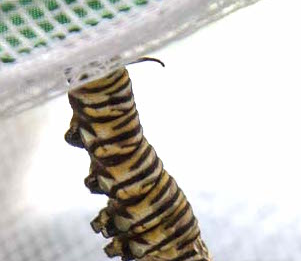Lespesia archippivora is a species of tachinid fly that refers to parasitoids of other arthropods. The tachinid fly monarch lives in the host’s body that eventually causes the host to die. Since it is estimated; that nearly 10% of insects among the class of insects are parasitoids, it has gained popularity. L. archippivora is a generalist capable of infecting at least 25 lepidopteran species in addition to one species of Hymenoptera. This species is usually common in North America; other species exist worldwide. A tachinid fly remains the concern in the morbidity of monarch butterflies. It was introduced in 1898; into the Hawaiian Islands by Albert Koebele. It serves as a biological control agent to reduce the population of armyworms. In addition to that, it can also biologically control pests such as sugarcane leaf roller (Omiodes accepta), corn earworm (Heliothis zea), black cutworm (Agrotis ipsilon), and variegated cutworm (Peridroma saucia).
Identification
There are around 1300 different species of tachinid flies in the North American region alone; there are approximately 10,000 around the globe. There is a wide diversity of physical characteristics among all tachinid flies species. The size of an adult tachinid fly is between 1/3″ to 3/4″ long. Their body shape, colouration and texture differ incredibly from each other. Some flies are fuzzy and grey, showing a close resemblance to a housefly. However, others are blue/green similar to a blowfly. There are red and chubby tachinid flies that are black and slender. While some of those are covered; with bristle hairs, others are smooth. To sum it up, each species exhibits a unique appearance. These flies can be easily distinguished from the houseflies as they drink nectar, whereas houseflies are not into nectar drinking. There is a high probability of observing them if the flies are sponging up the nectar.
Life Cycle
Each species of tachinid fly is only capable of using either a single insect species or a closely related group of host insects. A species of tachinid fly using a squash bug as the host will not lay eggs on a tomato hornworm. Some species are more specialized than others, but they all have coevolved with a specific host.
These flies near the caterpillars can be deadly. Their life cycle begins when these flies lay eggs on young caterpillars. The eggs hatch and; as a result, the fly larvae (maggots) start to swallow the blood or hemolymph of the caterpillar. Before the pupation, the maggot engulfs its way out of the pupa or caterpillar. It finds leaf litter and then locomotes underneath the twigs and leaves. It remains hidden and pupates into a brown coloured small pupa.
Bite
Tachinid flies are very beneficial for the garden as they kill pests in large numbers, but these flies are not safe either for the monarch caterpillars or beetles. A few species of these flies lay eggs on plants eaten by the host insect linked. When the host insect takes a leaf bite, they ingest the egg too. However, in their contribution to the gardening factor, these flies do not usually bother humans but complicate the garden pests. Tachinidae can lay eggs that a host will consume and die later on, or adult flies will insert eggs directly into the bodies of host species. With the gradual growth and development of the larva inside the host, it eventually kills the insect it is living inside. The killing is not caused; by its bite. Each species has a preferred method of its own but most go with beetles or caterpillars as hosts.
Eggs
Small flies and wasps are parasitoids or parasitic species that lay eggs on insects of the other kind. These particular parasites usually only live on a single host, eventually causing it to die. Tachinid flies and braconid wasps are two parasitoids that feed on and kill monarchs. Such parasitoids lay their eggs on other species like caterpillars. Concerning the tachinid fly larvae, these though feed on monarch caterpillars but usually do not cause the death of their host before the caterpillars pupate.



